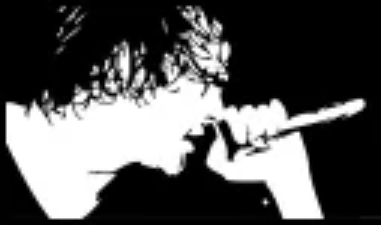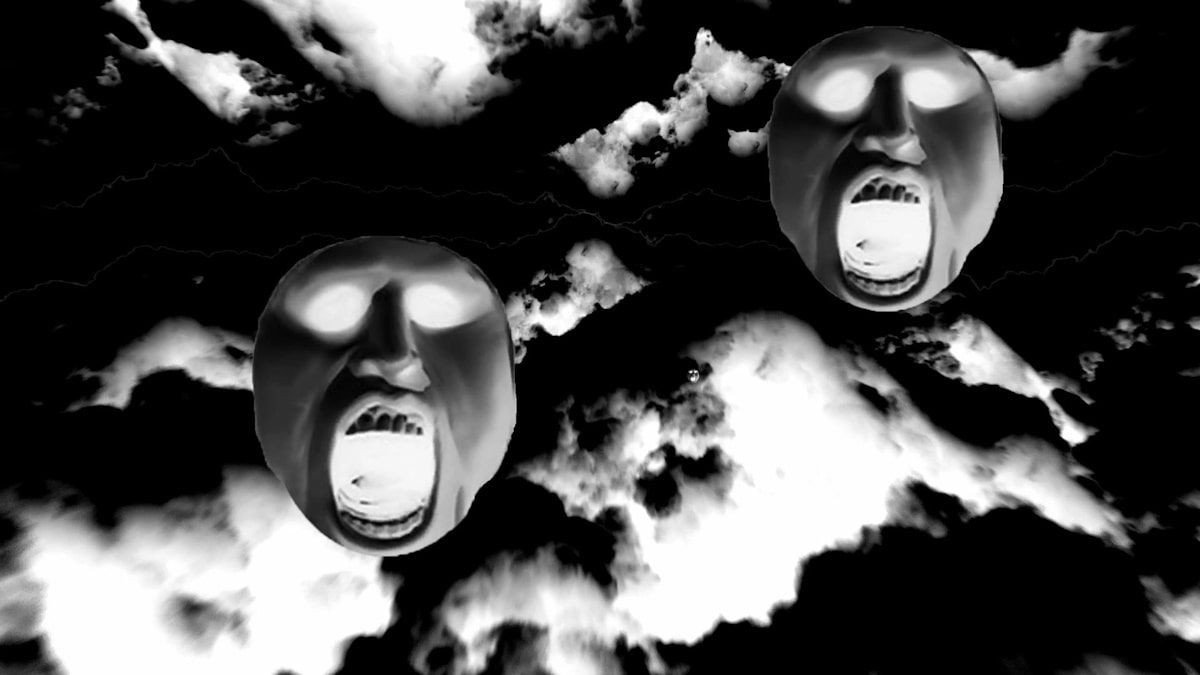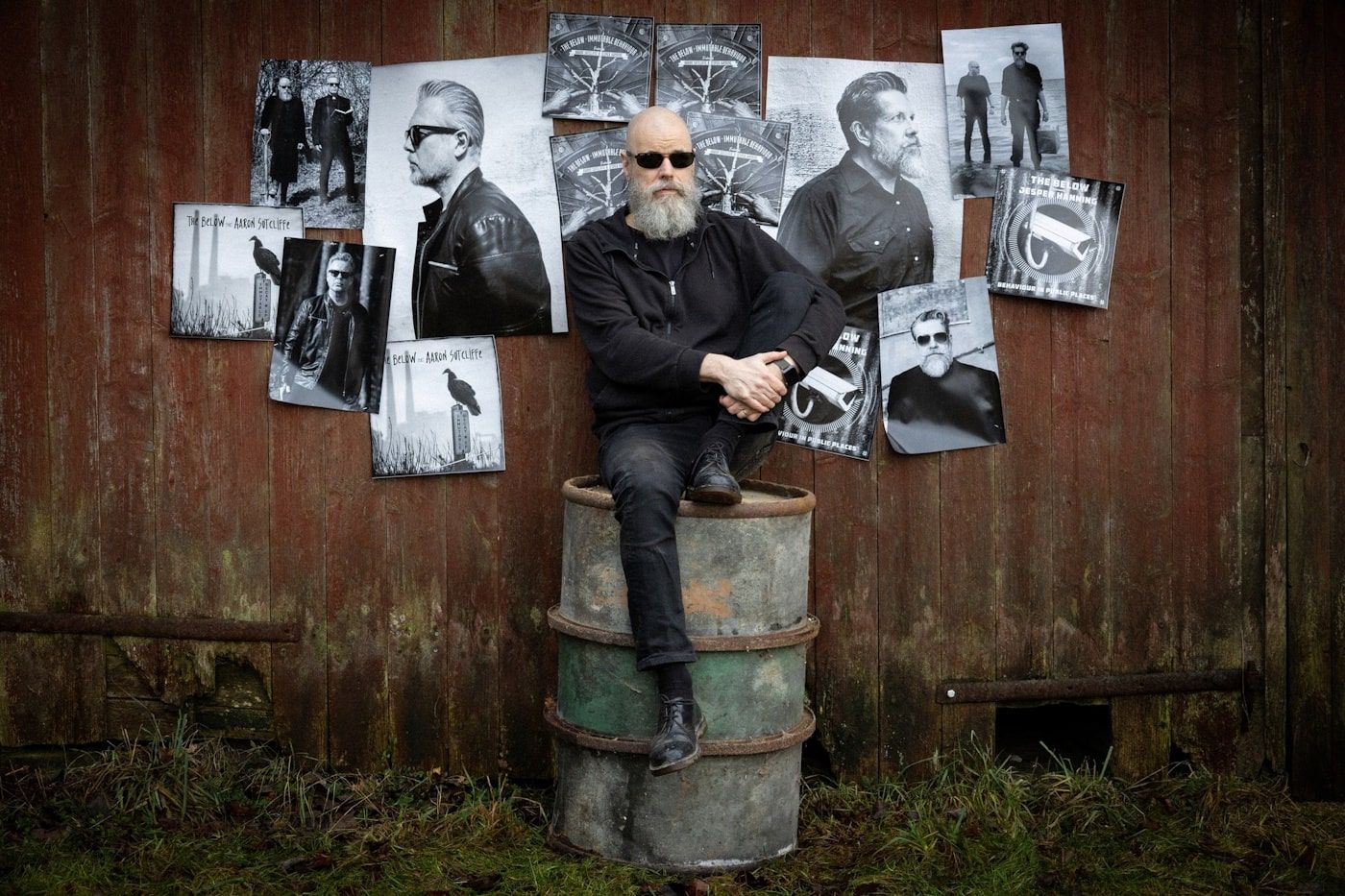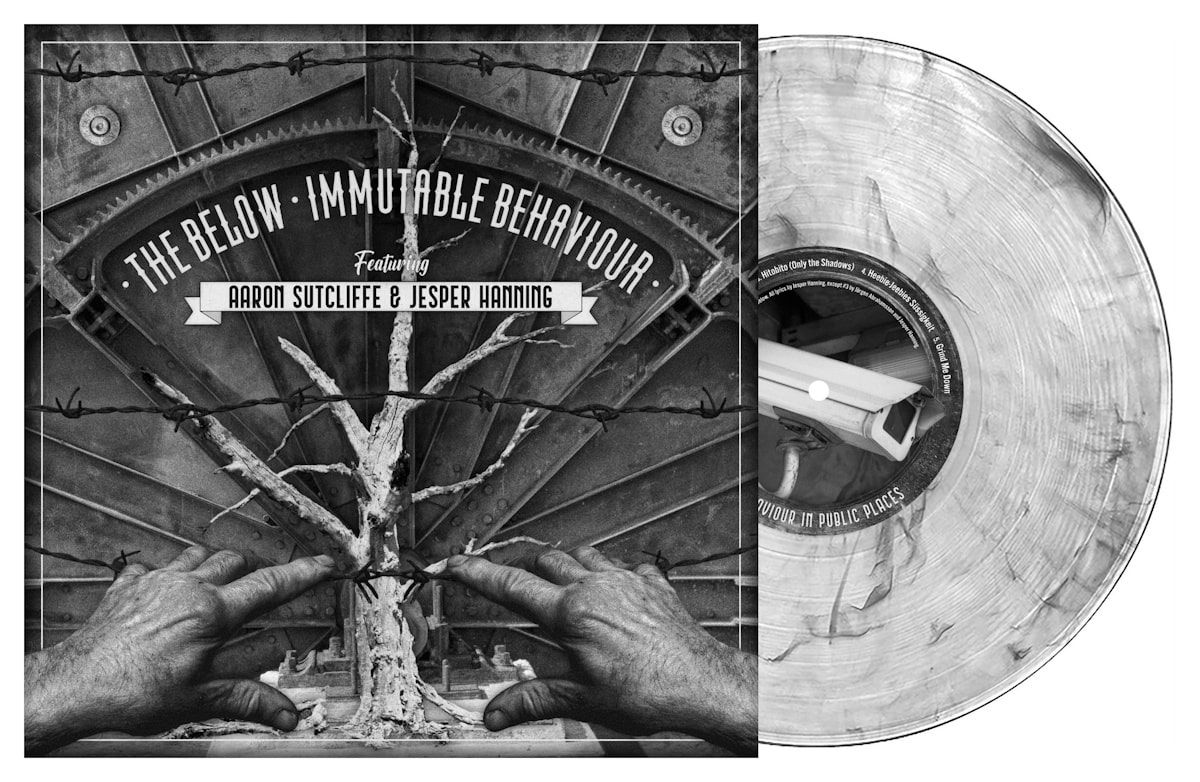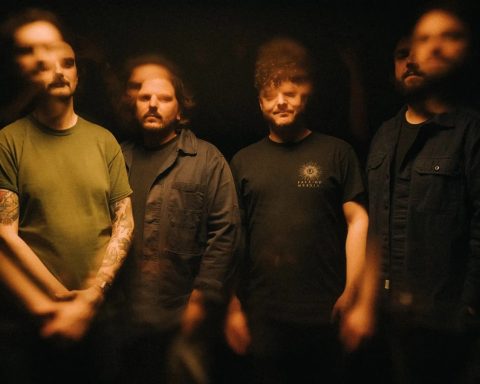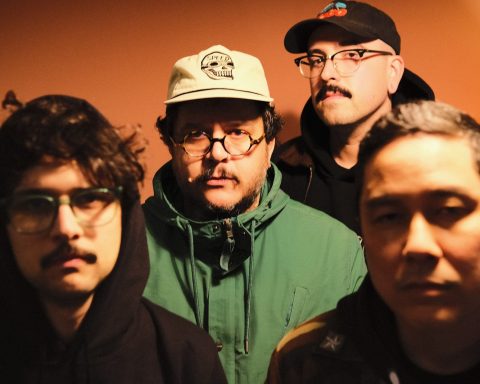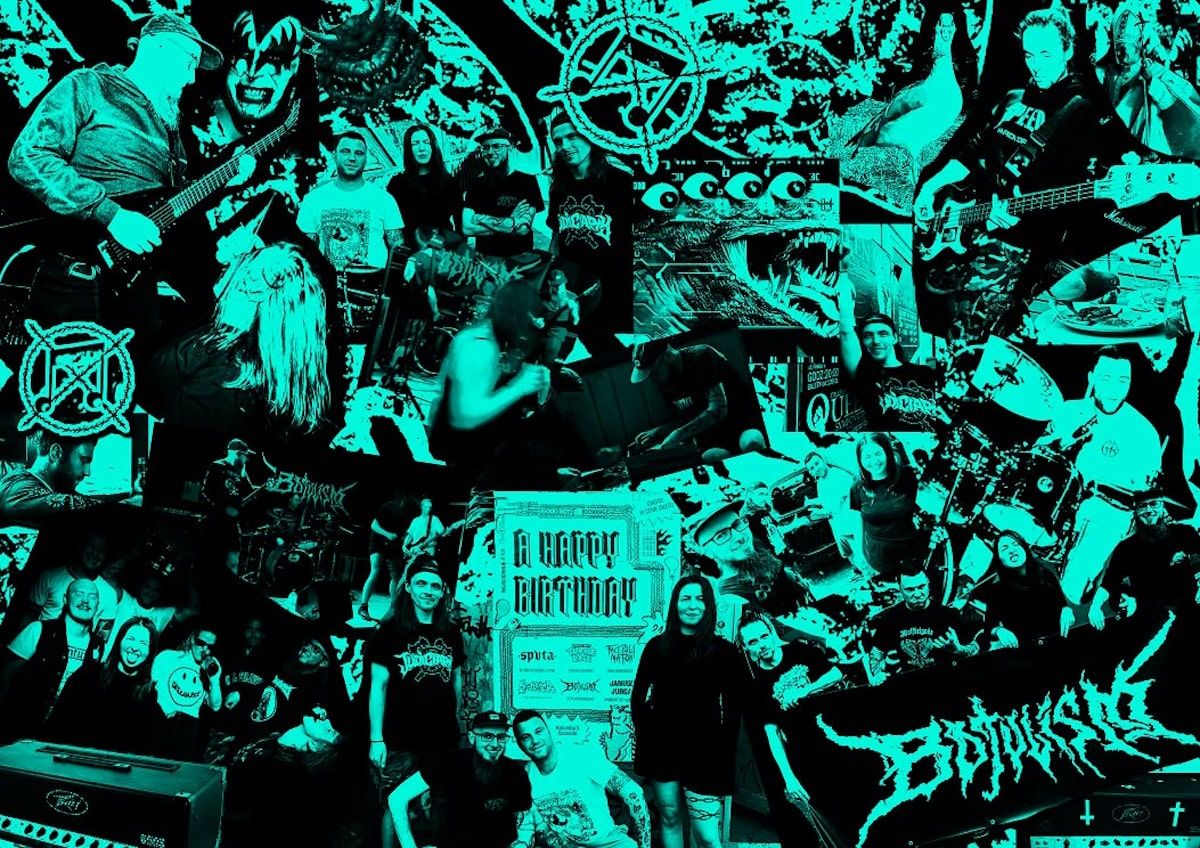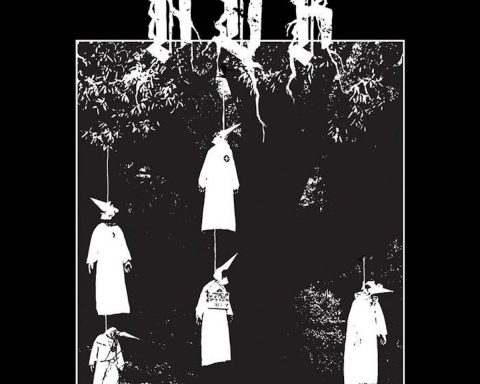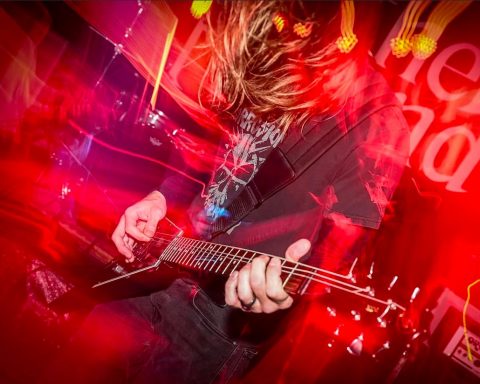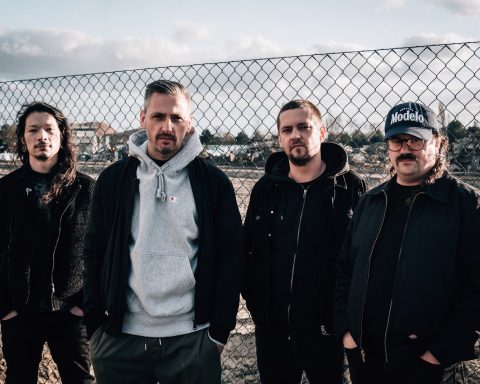Swedish industrial post-punk outfit The Below returns with the release of Immutable Behaviour on February 28, 2025. The LP, pressed on limited semi-transparent dark smoke vinyl, merges two acclaimed 2024 EPs—Immutable Decay and Behaviour in Public Places—each occupying a side of the record. This release marks a culmination of sonic and thematic explorations, dissecting systemic failures, war, and the grim underbelly of human nature.
Coinciding with the album drop is the premiere of Hitobito (Only the Shadows), an animated video crafted by Daniele Arcuri, known for his work with Vince Clark and Pixelgrinder. This final entry in a series of eight visual pieces from the album presents a nightmarish depiction of nuclear devastation, drawing from the seared remnants of Hiroshima and Nagasaki.
“Hitobito (Only the Shadows)” roots itself in the bombings of Hiroshima and Nagasaki, where heat and light seared human shadows into permanence while the bodies burned away. “In some cultures, vampires are believed to be blood-drinking human monsters who do not cast shadows, perhaps as a manifestation of their lack of a soul,” the band notes in the video’s description. “However, isn’t it even more monstrous when a shadow remains but the human is missing?” The song moves like that question—deliberate, heavy, its harsh industrial churn split by a thin, ghostly melody that doesn’t so much soften the blow as sharpen its edge.
Daniele Arcuri, the animator behind it, shapes the video into something surreal and jagged—his hands have touched work for Vince Clark and Pixelgrinder, and here he matches the track’s mood with visuals that twist and linger. It’s not a clean narrative; it’s a haunt, a fitting close to the eight-video arc for Immutable Behaviour.
Bo Magnusson, the force steering The Below, knows how to pull sound from the rough—scrap metal, power tools, forgotten objects hammered into shape. “Inspiration can come from anywhere—a strange sound, machinery, everyday objects, or just a walk in the forest,” he says, his words grounded in decades of kicking around Sweden’s underground.
Magnusson cut his teeth in the ’80s with Dr. Evil and The Boys From Below, a crew that turned stages into scrapyards—pig skulls, wire fencing, levitating washing machines.
“We were known for chaotic performances,” he recalls. That was before a long break, a retreat from music after the group split in 1992. He resurfaced in 2015 with The Below, sparked by old instruments and salvaged junk, nudged along by his son’s own sonic dabbling. Hanning’s voice on this track slots into that lineage, a collaboration that pulls the personal into the vast—here, the indelible marks of history’s violence.
The Below frames Immutable Behaviour as a split lens: one half, Immutable Decay, stares down societal rot—war, corruption, a planet buckling—while Behaviour in Public Places, where “Hitobito” sits, turns inward. “It explores the darker aspects of the human psyche,” Magnusson says, and this track fits that mold, its lyrics and sound a meditation on absence and monstrosity. Think of those stone-etched shadows—not as relics, but as warnings. “A hauntingly foreboding track,” they call it, and the delicate thread woven through its industrial weight makes it stick.
“I think the artwork reflects the album’s general themes of decay, conflict, and human nature, creating a bridge to the music and lyrics.” – says Bo.
“There is a lot of symbolism in the various elements, which echo the album’s two lyrical perspectives—one addressing broad societal issues and the other exploring the complexities of human behaviour. While it doesn’t directly reference specific lines, the artwork encapsulates the album’s overarching message: a world unraveling, both externally and within.”
“I’m a bit embarrassed to admit it, but after trading the hectic city life for a more relaxed pace in the countryside, I’ve largely lost touch with the local underground scene,” Bo Magnusson reflects.
“When I worked as a concert promoter in Malmö, we made a point of featuring local artists as opening acts whenever possible, so I knew almost everyone.” While many of those bands are still active, new names have emerged—some of which Magnusson has kept an eye on.
Abu Nein
There’s been quite a buzz about this band lately, and rightfully so. Darkwave at its finest.
Angst Session
Dark, slow, and hypnotic.
Massiv Ovilja
An experimental electronic, one-man project.
Idiot Child
Sludgy noise rock—hard and abrasive.
M:onitor
A new progressive industrial band formed by veterans of the electronic scene.
Here’es the full track by track rundown for “Immutable Bahaviour“:
View this post on Instagram
Tabla Motors
The opening track, “Tabla Motors”, captures the essence of ageing and the inevitable approach of death. The lyrics paint a picture of a troubled, threatening world where chaos and uncertainty reign. The once-revered gods are now abandoned, their temples crumbling into dust. In their place, new belief systems arise, offering hope and solace to weary souls seeking meaning amid the turmoil. The melody is tense yet beautiful, serving as a poignant reminder of the passage of time and the ever-changing landscape of faith and existence.
Knives and Heights
“Knives and Heights” is all about the intensity of fear and the traumas it can cause. The verses are just little snapshots of eerie things. The chorus was inspired by something actor Cary Grant’s grandmother once told a reporter about her grandson: “He was a nervous child with two primary fears: knives and heights”. Then we just added one more fear: fluorescent lights.”
Hitobito (Only the Shadows)
In some cultures, vampires are believed to be blood-drinking human monsters who do not cast shadows, perhaps as a manifestation of their lack of a soul. However, isn’t it even more monstrous when a shadow remains but the human is missing? “Hitobito (Only the Shadows)” is a hauntingly foreboding track based on the bombings of Hiroshima and Nagasaki, where the shadows of the victims were etched into stone. In contrast to the slow, grinding, harsh industrial sounds, a gentle yet infectious melody adds a captivating dimension to the song.
Heebie-Jeebies Süssigkeit
The lyrics explore our various facades, highlighting how each individual possesses thoughts and emotions not always apparent to others. Simultaneously, the life and actions of John Wayne Gacy serve as an extreme example, illustrating the extent to which a person can conceal integral aspects of themselves.
Grind Me Down
“Grind Me Down” is a very straightforward text about how we live in a time where people tend to ‘find the truth’ in filter bubbles where they seem to lose all common sense. The conclusion is always the same: the rest of us are misled fools who need to ‘educate ourselves’. The filter bubble grinds these people down while simultaneously winding them up. A dangerous combination.
90 Seconds to Midnight
The destruction of our planet is becoming increasingly evident as environmental crises and climate-related disasters follow one another with growing intensity. Meanwhile, corruption, populism, and unbridled capitalism stand in the way of meaningful efforts to reverse our planet’s decline.
Artificial Lights (Dystopian Haze)
This one’s about the horrors of Russia’s brutal assault on Ukraine, and the uncertainty of being forced to live in bomb shelters. The video for the track was filmed in Lviv, Ukraine, by an all-Ukrainian team. Kate Tiuri, the director of the video, commented on the production, stating: “War doesn’t stop culture! We continue to stand, to speak, and to create. In this musical piece, I want to convey that tragedy can exist alongside beauty. We demonstrate the beauty of Ukraine through dance—a contemporary duet that embodies the strength, resilience, pain, and indomitability of the Ukrainian people.”
No Place is Safe
Originally, this track was written about the Israeli assault on Gaza in 2014. Sadly, the harrowing realities of war have only worsened for the Palestinian population, and the line ‘No Place is Safe’ tragically rings truer today than ever before.
17 Days
A news story reported on a young man who was incarcerated because he couldn’t afford to pay a minor traffic ticket. In jail, he was denied his medication, and despite being under constant 24/7 surveillance, no one noticed his rapid deterioration. He lasted only 17 days in prison—murder by negligence; no one was held accountable. The actual surveillance footage is among the most horrifying I have ever seen.
Immutable Decay (Outro)
The album concludes with a never-ending reflection on humanity’s failure to learn from history, caught in an endless loop of repeating the same mistakes.

